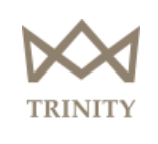Genital Warts Gangnam Seoul
Genital warts are a common manifestation of Human Papillomavirus (HPV) infection. While HPV itself has no cure, the warts can be effectively treated and removed in South Korea. Korea has a modern and efficient healthcare system, with many clinics specializing in STIs and dermatological procedures that cater to foreigners.
Understanding Genital Warts
- Cause: Genital warts are caused by certain low-risk strains of HPV, primarily types 6 and 11.
- Symptoms: They appear as small, flesh-colored bumps or clusters, often resembling cauliflower, in the genital or anal area. They can also appear on the thighs or inside the mouth. They may cause itching, discomfort, or bleeding, but often have no symptoms.
- Transmission: Spread through skin-to-skin contact, usually during sexual activity. Even if warts aren't visible, the virus can still be transmitted.
- Recurrence: Warts can recur even after treatment, as the virus remains in the body. Regular follow-up is often necessary.
Diagnosis and Treatment Options in Korea
Diagnosis typically involves a visual examination by a doctor. Sometimes, a biopsy might be taken to confirm the diagnosis or rule out other conditions. HPV typing (identifying the specific strain) can also be done.
Korean clinics offer a range of effective treatment methods for genital warts, tailored to the size, number, and location of the warts:
- Topical Prescription Treatments:
- How it works: Creams or solutions like Imiquimod, Podophyllin, or Sinecatechins are applied directly to the warts by the patient at home or by the doctor. They work by boosting the immune response or by destroying wart tissue.
- Benefits: Non-invasive, can be done at home.
- Consideration: May take several weeks to clear, and can cause skin irritation.
- Cryotherapy (Freezing Treatment):
- How it works: Liquid nitrogen is applied to freeze and destroy the wart tissue. The wart typically blisters and then falls off.
- Benefits: Quick outpatient procedure, minimal downtime.
- Consideration: May require multiple sessions, slight discomfort or blistering post-treatment.
- CO2 Laser Removal:
- How it works: A high-precision laser vaporizes the wart tissue with minimal damage to surrounding skin.
- Benefits: Effective for larger, clustered, or stubborn warts, especially in sensitive or hard-to-reach areas. Precise, often leaves minimal scarring.
- Consideration: Requires local anesthesia, may have a slightly longer healing time than cryotherapy for larger areas.
- Electrosurgical Removal (Electrocautery):
- How it works: Involves burning off warts using a high-frequency electric current.
- Benefits: Fast results, effective for various wart sizes, generally low recurrence rates.
- Consideration: Performed under local anesthesia, may have some scarring.
- Surgical Excision:
- How it works: Warts are surgically cut out, typically for very large or resistant warts.
- Benefits: Immediate removal.
- Consideration: Requires local anesthesia, may involve stitches, longer recovery time.
Cost of Genital Wart Treatment in Korea (Approximate Ranges as of July 2025)
The cost varies depending on the number, size, and location of the warts, the chosen treatment method, and the clinic's pricing structure.
- Consultation and Initial Testing (e.g., HPV typing, STI screening): ₩100,000 to ₩250,000 KRW (approx. $75 to $185 USD).
- Topical Treatment (full course, if prescribed): ₩100,000 to ₩300,000 KRW (approx. $75 to $220 USD).
- Cryotherapy: ₩200,000 to ₩400,000 KRW per session (approx. $150 to $300 USD). Multiple sessions may be needed.
- CO2 Laser Removal: ₩300,000 to ₩700,000 KRW per session (approx. $220 to $520 USD). For a specific wart, some sources quote ₩80,000-₩200,000 per session.
- Electrosurgery: ₩400,000 to ₩800,000 KRW (approx. $300 to $600 USD).
- Surgical Excision: Can be similar to electrosurgery or higher depending on complexity.
Some clinics may offer package pricing for multiple sessions or warts.
Korean National Health Insurance (NHIS):
- If you are enrolled in NHIS (and have an Alien Registration Card), diagnosis and treatment of STIs like genital warts are generally covered. Your out-of-pocket costs will be a co-payment, which is significantly less than the full cash price.
- However, treatments that are considered purely cosmetic, or if you opt for certain advanced laser technologies that aren't deemed strictly medically necessary for removal, might have a higher non-covered portion. Always confirm coverage with the clinic beforehand.
Prevention and Follow-up
- HPV Vaccination: The HPV vaccine (Gardasil 9) is highly recommended for preventing future HPV infections (including types that cause genital warts and cancers). It's available in Korea and can be administered at the same clinics.
- Cost of Gardasil 9: A single dose is typically ₩180,000 to ₩250,000 KRW. A full 3-dose course (for ages 15-45) is about ₩540,000 to ₩750,000 KRW. (NHIS does not cover this for adults, generally only for specific younger age groups in national programs).
- Follow-up: Because warts can recur, regular follow-up visits are crucial to monitor the treated area and address any new lesions promptly.
- Safe Sex Practices: Using condoms consistently can reduce the risk of HPV transmission, though they don't offer 100% protection as the virus can be on skin not covered by the condom.
It's important to seek medical attention for genital warts to get an accurate diagnosis and appropriate treatment, and to discuss prevention strategies.








